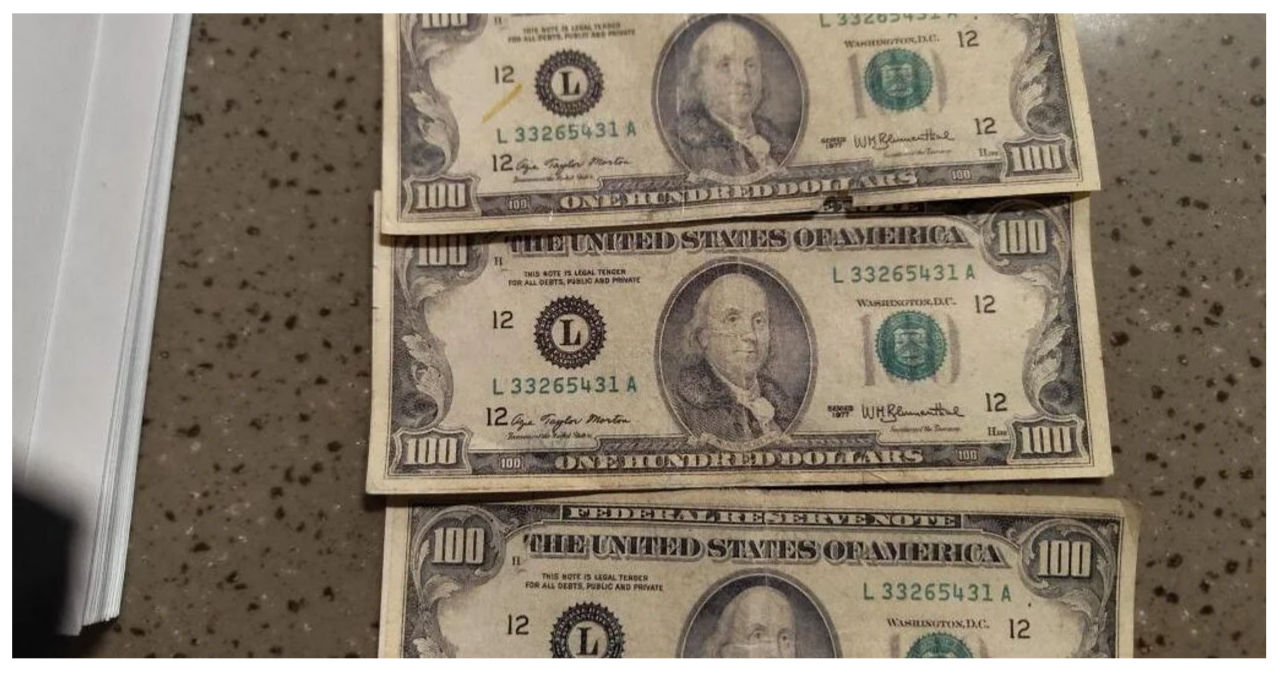A man was arrested by Indianapolis police on Tuesday in connection with an ongoing counterfeit $100 bill scheme in central Indiana.
Kenneth Johnson was arrested by officers from the Indianapolis Metropolitan Police Department. He is facing multiple charges, including a felony counterfeiting charge, as well as two misdemeanors for resisting law enforcement and criminal mischief. In addition to these charges, Johnson also had an outstanding warrant from Hancock County.
Authorities are currently searching for Tommie Lee Jackson Jr., who is wanted on a counterfeiting warrant in Hancock County.
Jackson and Johnson allegedly engaged in the production of counterfeit older versions of the $100 bill, as the newer edition incorporates enhanced security features that make it more challenging to replicate.
Lt. Shane Foley, a public information officer for the Indianapolis Metropolitan Police Department (IMPD), emphasized the importance of exercising extra caution when handling cash, particularly if encountering an older version of a $100 bill.
Foley cautioned the public, businesses, and employees to be vigilant when accepting $100 bills and to verify their authenticity.
Johnson was apprehended in northwest Indianapolis and discovered in possession of counterfeit bills.
According to Foley, they were successful in tracking down a person who decided to escape by jumping out of the second floor of the motel. Notably, this individual was found carrying counterfeit bills.
Johnson and Jackson’s outstanding Hancock County warrants were issued by the Fortville Police Department for using counterfeit currency at a gas station.
According to the Fortville police, Johnson and Jackson were found to be using counterfeit money in the town, rather than producing it locally. Their spending spree at the gas station amounted to approximately $700.
According to Detective Diane Graffitti, the cashier became wary of the significant number of $100 bills and decided to use a counterfeit detection pen. Unfortunately, the pen failed to identify the counterfeit bills.
The bills had a different texture compared to regular money, although they still shared the same identification number, she mentioned.
Graffitti mentioned that these establishments can be found all over Indiana, with most of their investments being made in Indianapolis. However, they are now expanding their reach to smaller towns as well.
The design of the $100 bill used in the period from 1990 to 1996 is utilized in this scheme.
According to the U.S. Currency Education Program website, bills from 1990-1996 should have a security thread positioned to the left of the portrait. This thread should display the letters “USA” and the number “100”, which become visible when the bill is held up to the light. Additionally, the security thread should emit a pink glow when exposed to ultraviolet light.
The bills should also feature microprinting surrounding the portrait of Ben Franklin, which would display the text “THE UNITED STATES OF AMERICA” in a font that may necessitate the use of a magnifying glass.
The back of the picture should feature a depiction of Independence Hall.
Counterfeit bills often pose a significant problem as they can easily go unnoticed. One effective measure to tackle this issue is to ensure that each bill has a distinct serial number. It is worth noting that many counterfeit bills are identified through the presence of identical serial numbers, which are simply copied and pasted. By implementing unique serial numbers for each bill, we can enhance the security measures and make it harder for counterfeit bills to circulate undetected.
Foley advised that if the incident is currently ongoing, individuals should dial 911 for immediate assistance. In the case of possessing a counterfeit $100 bill that was already submitted, contacting the non-emergency number of the Indianapolis Metropolitan Police Department (IMPD) is recommended.
Jeffrey Adams, the special agent in charge of the Indianapolis field office for the Secret Service, stated that they are unable to provide any comments on ongoing cases. In a statement shared with News 8, Adams conveyed this information.
As a matter of operational security, the Secret Service does not discuss potentially ongoing investigations. With that said, counterfeiting of U.S. currency continues to be an issue both domestically and globally. In fiscal year 2023, the U.S. Secret Service arrested 197 individuals suspected of counterfeiting and seized $21.8 million in counterfeit currency. We recommend individuals, retailers, and financial institutions to remain vigilant and examine bills. U.S. currency has several built-in security features to help protect against counterfeiting. More information on these features can be found here.
Jeffrey Adams, Secret Service Special Agent in Charge
Foley stated that there could potentially be several individuals involved in this activity throughout the city. He emphasized that it would be inaccurate to restrict this behavior to just two individuals, as the exact number remains unknown.
The Greenfield Police Department is currently investigating a counterfeiting case that occurred on March 19. However, they do not believe that this case is connected to the two other cases.



